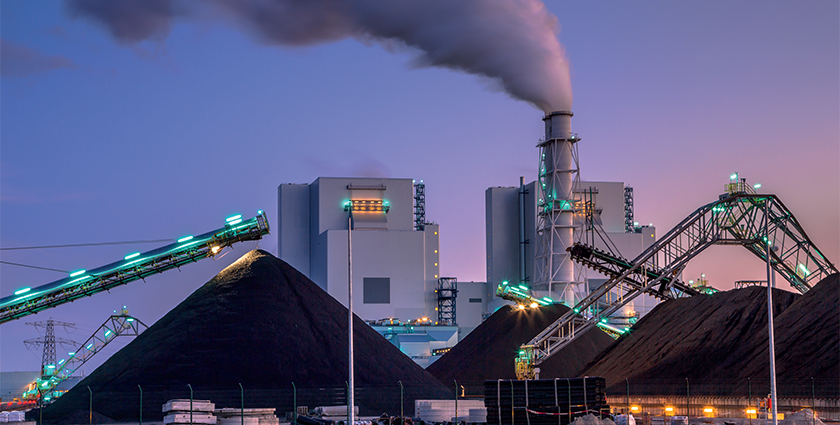
Coal today, gone tomorrow
Countries across the world are currently trying to make their electricity supplies more environmentally friendly, primarily by producing more power from renewable sources and reducing the amount produced by fossil fuels. However, this has posed some difficult challenges – namely, keeping to planned timelines for ending coal-fired power whilst meeting future electricity demand.
In Britain, this is not so much of a problem. Only around two per cent of this region’s electricity output comes from coal and the phasing out of this fuel source looks set to be achieved, as planned, by 2024. Germany, on the other hand, is facing a much stiffer challenge to cease producing coal by 2030 – eight years earlier than originally anticipated. Currently, coal is strongly entrenched in German energy systems so it would need a significant increase in renewable capacity to fill the future demand gap left by declining coal generation and the ongoing decommissioning of nuclear power plants. Also, such a fundamental change in the power supply will have consequences in the wholesale and balancing markets and requires smart allocation of resources – otherwise there may be greater electricity price volatility as well as potential threats to security of supply and grid stability.
The process of greening up the world’s electricity supply has also been made more challenging due to the geo-political instability in eastern Europe. EnAppSys data shows that Russia’s invasion of Ukraine sent wholesale gas prices in Europe soaring to record levels in the first quarter this year. This made gas-fired generation less attractive and increased Europe’s reliance on coal to offset a fall in nuclear generation and lower-than-usual levels of hydro output.
All of this emphasizes that, in the short term, market circumstances indicate a need for coal-fired generation. With low French nuclear generation and the planned nuclear phase-outs in Germany and Belgium, together with super high gas prices, limited LNG capacity and a potential shut-down of Russian gas flows, it appears that Europe cannot do without coal for the moment.
However, the Intergovernmental Panel on Climate Change (IPCC) clearly indicates that climate goals cannot be met if coal generation is not significantly scaled down. This means that in the mid to long-term, coal must shut down to meet climate goals. In the context of the Ukrainian war, there’s a tendency to reduce dependency on Russian gas, but also a strong reluctance to fill the gap with coal generation. The war may even become a strong catalyst for a faster decarbonization effort across Europe.
For now, we need coal as a baseload supply along with gas. I don’t see Germany, Poland and some central and eastern European countries meeting demand without coal generation. As more renewable capacity is built, more flexible generation or storage will be needed to counter the intermittency of solar (on a daily basis) and wind (for longer periods). Low start-up costs and major flexibility will be crucial in most countries with heavy renewable development, but this will not be provided by coal.
In countries where renewable development is currently lagging, some form of baseload generation may be necessary. Is this going to be coal? Maybe, but even relatively poor countries are looking to invest in alternatives to coal.
Would a complete phase-out of coal lead to too much reliance on gas and/or nuclear to fill the gaps in periods of low renewable generation? The main question there is: how big would those gaps be and how long would they remain? Filling the gaps around renewables requires very fast ramping speeds as can be observed in the British and Netherlands markets. Coal is much less suited for this than gas or pumped storage. A high baseload generation, be it with nuclear or coal, can lead to inflexibility and extreme (negative and positive) price fluctuations that we’ve seen recently in Belgium and France.
A lower reliance on gas is politically important at the moment, but the climate consequences of keeping coal online are significant. With a large share of the public (and the politicians they vote for) rejecting the use of coal for power generation, the energy transition may well speed up, introducing new fuels and other types of flexibility.
So, ultimately, does coal have a future? In the short term, yes; in the long term, no. The political direction of Europe and beyond is clear and public opinion is also clear: while coal/lignite generation is currently tolerated, it’s clear that this is seen as a necessary evil to cope with the current energy crisis. There’s simply no support for keeping coal plants open any longer than absolutely necessary.
 JEAN-PAUL HARREMAN
JEAN-PAUL HARREMAN
Jean-Paul Harreman is director of EnAppSys BV. He established EnAppSys BV in the Netherlands in February 2017 and since then has grown the company’s presence across Europe, building a solid customer base for EnAppSys’ popular IT platform. The business is a highly respected provider of data, consultancy and information services to companies in the energy and power generation markets. These services are used by generators, stakeholders, suppliers and traders to improve their understanding and maximize the value they are able to extract from the market.
For further information please visit: www.enappsys.com